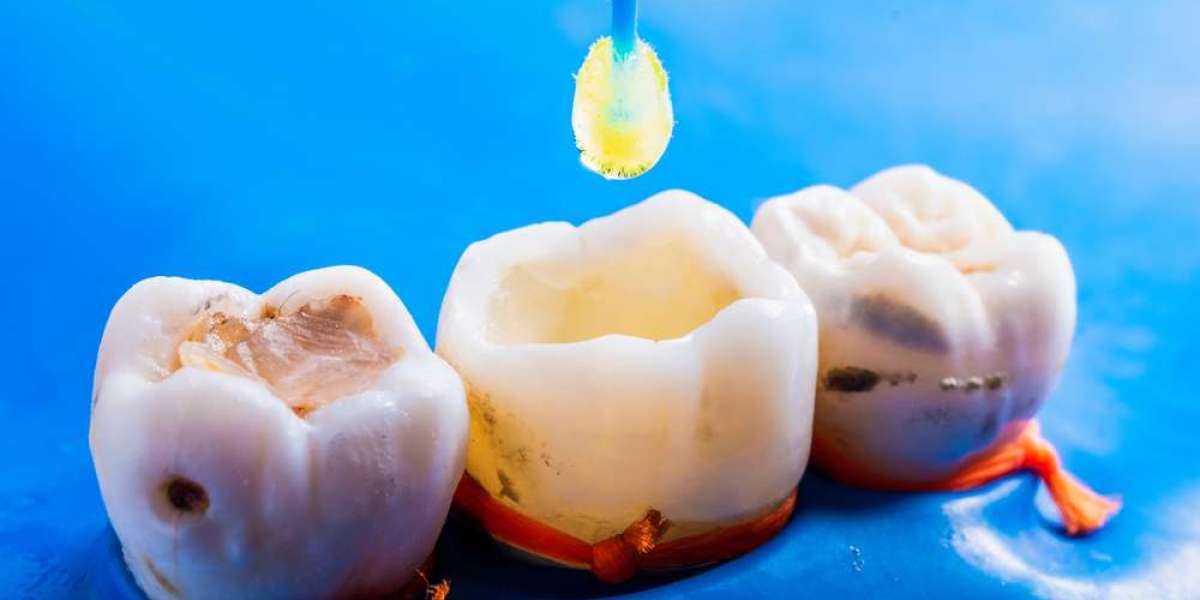So, have you ever felt a little self-conscious about your smile because of a chipped tooth or a small gap? Or perhaps you have a tooth that doesn't have the right colours and doesn’t match the rest of your pearly whites? If you’ve ever wondered how these things can be fixed, you’re in for a treat. Moreover, today, we’re going to explore the fascinating world of cosmetic dental bonding. Therefore, this procedure can help improve your smile, making it brighter and more even.
What is Cosmetic Dental Bonding?
So, before we dive into what happens during a cosmetic dental bonding procedure, let’s first understand what it is. Moreover, cosmetic dental bonding is a simple, painless way to repair minor flaws in your teeth. Therefore, dentists use a special tooth-coloured material called resin to fill in chips, close gaps, and even out discoloured teeth. Moreover, this resin bonds to your teeth, hence the name "bonding."
Why Would You Need Dental Bonding?
So, you might wonder why someone would need dental bonding. Moreover, here are a few reasons:
- Chipped or Cracked Teeth: Accidents happen, and sometimes, they can cause teeth to chip or crack. Bonding can easily repair these damages.
- Discoloured Teeth: Some teeth can become stained or discoloured over time. Bonding can cover these spots, giving you a uniform smile.
- Gaps Between Teeth: If you have small gaps between your teeth, bonding can fill these spaces, making your teeth look more even.
- Misshapen Teeth: Sometimes, a tooth might be smaller or oddly shaped compared to others. Bonding can reshape such teeth for a more balanced appearance.
- Tooth Decay: Bonding can also serve as a cosmetic filling for minor cavities.
Preparing for Your Dental Bonding Procedure
So, now that you know why dental bonding might be needed, let’s talk about how to prepare for your procedure. Moreover, the great thing about dental bonding is that it usually doesn't require much preparation. So, here are a few steps you might expect:
- Consultation: First, you’ll visit your dentist for a consultation. This is a friendly chat where the dentist will look at your teeth and discuss what you’d like to change about your smile.
- Colour Matching: The dentist will use a shade guide to select a resin colour that matches your natural teeth. This ensures that the bonded area looks just like the rest of your teeth.
- Cleaning: Your teeth will be cleaned thoroughly to remove any plaque or debris.
The Dental Bonding Procedure: Step-by-Step
Alright, let’s get into the nitty-gritty of the cosmetic dental bonding procedure. So, don’t worry; it’s a straightforward and often painless process. Moreover, here’s what typically happens during a dental bonding session:
Step 1: Preparation
So, as mentioned earlier, your dentist will start by selecting the resin colour that matches your teeth. Moreover, there’s no need for anesthesia unless the bonding is being used to fill a decayed tooth, in which case the dentist will numb the area.
Step 2: Conditioning the Tooth
The dentist will slightly roughen the surface of your tooth to help the bonding material stick to it. This might sound scary, but it’s just a light scrubbing to create a better bonding surface. Then, a conditioning liquid is applied to the tooth.
Step 3: Applying the Resin
So, now comes the fun part! The dentist applies the tooth-coloured resin to the prepared tooth. Therefore, the resin is like a putty that they can mould and shape to match the contours of your natural teeth.
Step 4: Shaping and Hardening
So, once the resin is applied, the dentist shapes the teeth bonding treatment to match the surrounding teeth. Moreover, after shaping, a special light (called a curing light) hardens the resin, making it strong and durable.
Step 5: Final Touches
So, after the resin is hard, the dentist trims and polishes it to match the shine of your natural teeth. Therefore, this final step ensures that the bonded area blends seamlessly with the rest of your smile.
After the Procedure: Taking Care of Your Bonded Teeth
Hooray! The cosmetic dental bonding procedure is complete, and you now have a beautiful, enhanced smile. But how do you take care of your newly bonded teeth? Here are some tips:
- Good Oral Hygiene involves Brushing your teeth at least twice a day and flossing daily. It is crucial to maintain a healthy smile.
- Avoid Staining Foods and Drinks: Try to limit your intake of coffee, tea, and red wine, which can stain the resin.
- No Chewing on Hard Objects: Avoid biting your nails or chewing on pens, ice, or hard candy, as these can chip the bonding material.
- Regular Dental Check-ups: Visit your dentist regularly for check-ups and cleanings. They’ll make sure your bonded teeth stay in great shape.
Fun Facts About Dental Bonding
So, to make our exploration even more exciting, here are some fun facts about dental bonding:
- Quick and Easy: Most dental bonding procedures can be done in just one visit, often in under an hour per tooth.
- No Pain, All Gain: Dental bonding is usually painless and doesn’t require anesthesia unless it is used to fill a cavity.
- Long-Lasting: With proper care, dental bonding can last several years before it might need a touch-up.
- Versatile: Bonding isn’t just for teeth. They can also use dental bonding to repair small chips and cracks in other dental appliances.
Comparing Dental Bonding with Other Cosmetic Dental Procedures
So, how does dental bonding treatment compare with other cosmetic dental procedures? Let’s take a quick look:
- Dental Veneers: Veneers are thin shells that cover the front surface of teeth. They are more durable than bonding but also more expensive and require more tooth preparation.
- Crowns: Crowns cover the entire tooth and are famous for more severe damage. They are stronger than bonding but involve more extensive preparation and cost.
- Teeth Whitening: Teeth whitening is a purely cosmetic procedure that makes your teeth whiter. It doesn’t repair damage like bonding does.
Conclusion
Cosmetic dental bonding is a wonderful way to improve your smile with minimal fuss. Whether it’s fixing a chip, closing a gap, or covering a discoloured tooth, bonding can help you feel more confident about your smile. Remember, it’s important to maintain good oral hygiene and visit your dental bonding canada dentist regularly to keep your teeth and any bonded areas in top shape. Now that you know what to expect, you can look forward to a brighter, more beautiful smile. So, next time you’re at the dentist, don’t be afraid to ask about dental bonding and how it can help you achieve the smile of your dreams.







